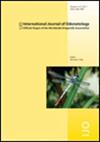Charlie Ellington(1952-2019)-从事动物飞行力学
IF 1
4区 农林科学
Q3 ENTOMOLOGY
引用次数: 0
摘要
Charles Porter Ellington 1952年12月31日出生于马里兰州,在那里和佐治亚州长大,并在美国北卡罗来纳州杜克大学获得了第一个学位。在Steven Vogel和Stephen Wainwright的领导下,当时的杜克大学是美国生物力学的中心,与查理同时代的几位同事随后在美国其他校园建立了有影响力的实验室。他走了另一条路,1972年凭借著名的丘吉尔奖学金来到剑桥,在当时世界昆虫飞行研究领导者、才华横溢的丹麦人托克尔·韦斯·福格的指导下攻读博士学位。韦斯·福格最近在空气动力学方面开辟了新天地。利用自由飞行中的小黄蜂Encarsia formosa的高速摄影,他描述了第一个通过拍打翅膀产生高升力的非稳态机制。Charlie的职责是开发并将这种方法推广到其他昆虫群体,并致力于更好地了解悬停飞行的空气动力学。不久灾难降临,韦斯·福格自杀了。查理的监督由Ken Machin接管,他是一位无线电天文学家,后来成为动物学家,杰出的实验天赋是当时剑桥许多重要研究的基础。结果是一篇博士论文,它一定是该学位历史上最引人注目的论文之一,并引人注目地展示了美国本科生系统的学科广度可以在一名优秀学生身上取得什么成就。查理建立了自己的数字化仪,并使用衣柜大小的计算机,开发了第一种用于无障碍扑翼飞行运动学分析的方法和软件,并将其应用于他自己拍摄的一系列悬停昆虫的高速胶片。他确定了产生升力的五种新的非定常机制,至关重要的是,他是第一个开发出扑翼飞行涡流理论的人。他发展并扩展了形态测量参数在计算空气动力学和惯性力以及飞行功率要求方面的应用。1984年,这项工作几乎完好无损地发表在《皇家学会哲学汇刊B》的六篇开创性论文系列中,并为后来几乎所有关于昆虫飞行力学的研究奠定了基础。现在,查理在剑桥大学工作,取代韦斯·福格成为公认的昆虫飞行力学世界领导者。作为一名优秀的理论家和一流的实验学家,他与一系列研究生和博士后助理一起开始了一项研究和出版计划,主要研究不稳定机制的性质和相对重要性本文章由计算机程序翻译,如有差异,请以英文原文为准。
Charlie Ellington (1952-2019) – a career in animal flight mechanics
Charles Porter Ellington was born on December 31st 1952 in the State of Maryland, grew up there and in the State of Georgia, and gained his first degree at Duke University, North Carolina, all in the USA. Under the leadership of Steven Vogel and Stephen Wainwright, Duke at that time was the hub of biomechanics in the USA, and several of Charlie’s near contemporaries went on to establish influential laboratories on other US campuses. He took a different route, coming to Cambridge in 1972 on a prestigious Churchill Scholarship to work for a PhD under the supervision of Torkel Weis-Fogh, a brilliant Dane who was then the world leader in insect flight research. Weis-Fogh had recently broken new ground in aerodynamics. Using high-speed cinematography of the tiny wasp Encarsia formosa in free flight, he had described the first non-steady state mechanism for generating high lift by flapping wings. Charlie’s remit was to develop and extend this approach to other insect groups and to work towards a greater understanding of the aerodynamics of hovering flight. Disaster struck soon after, when Weis-Fogh took his own life. Charlie’s supervision was taken over by Ken Machin, a radio-astronomer turned zoologist whose outstanding experimental flair lay behind much important research in Cambridge at that time. The result was a PhD thesis that must rank among the most remarkable in the history of the degree, and spectacularly demonstrated what the disciplinary breadth of the American undergraduate system could achieve in an outstanding student. Building his own digitiser and using a computer the size of a wardrobe Charlie developed the first methodology and software for kinematic analysis of unimpeded flapping flight, and applied them to his own high-speed films of a range of hovering insects. He identified five new unsteady mechanisms for lift generation, and, crucially, was the first person to develop a vortex theory for flapping flight. He developed and extended the use of morphometric parameters in calculating aerodynamic and inertial forces and power requirements of flight. The work was published virtually intact in 1984 in a seminal series of six papers in Philosophical Transactions of the Royal Society B, and established the platform on which virtually all subsequent research on insect flight mechanics has been built. Now on the staff at Cambridge, Charlie replaced Weis-Fogh as the recognised world leader in insect flight mechanics. An excellent theoretician as well as a first-rate experimentalist, he began a programme of research and publications with a succession of postgraduates and post-doctoral assistants, primarily addressing the nature and relative importance of unsteady mechanisms in
求助全文
通过发布文献求助,成功后即可免费获取论文全文。
去求助
来源期刊

International Journal of Odonatology
ENTOMOLOGY-
CiteScore
2.30
自引率
0.00%
发文量
15
审稿时长
>12 weeks
期刊介绍:
International Journal of Odonatology (IJO) is aimed at providing a publication outlet for the growing number of students of Odonata. It will address subjects such as the ecology, ethology, physiology, genetics, taxonomy, phylogeny and geographic distribution of species. Reviews will be by invitation, but authors who plan to write a review on a subject of interest to the journal are encouraged to contact the editor.
 求助内容:
求助内容: 应助结果提醒方式:
应助结果提醒方式:


